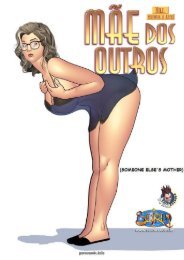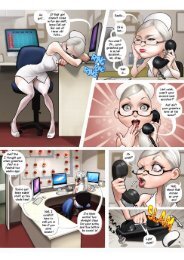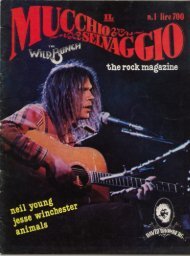AmericanCinematographer201201
You also want an ePaper? Increase the reach of your titles
YUMPU automatically turns print PDFs into web optimized ePapers that Google loves.
Top left: The crew films the long walk-and-talk
on the beach. Top right and bottom: Matt and his
daughters view their family property on Kauai.
spend a lot of time cooking pasta, drinking
wine and watching movies!
How did you arrive at a visual
style for The Descendants?
Papamichael: We saw a unique
opportunity to show Honolulu as it is
rarely, if ever, shown in cinema: not
glamorized or idealized. It’s a modern
American city with traffic jams and
skyscrapers, and a few miles away,
there’s an almost absurdly bizarre and
beautiful tropical paradise. There’s an
extreme contrast in wealth and poverty.
Go up the coast 30 miles, and you’ll see
native people living in tent cities. We
didn’t want to be too obvious about it,
but these contrasts are some of the
themes we wanted to represent visually.
The look of the movie is pretty
straightforward. It’s all about the performances
and the intimacy of the characters,
and the photography was designed
in part to be unobtrusive. Alexander has
a very particular visual style that reflects
his point of view. I suggested that we
go widescreen because I thought it was
very important to feel the power of the
land, and to make the power of nature
very present visually. The landscapes are
juxtaposed with tight, claustrophobic
interiors.
So you shot Super 35mm?
Papamichael: We shot 3-perf
Super 35mm with the Panaflex Platinum
and Primo prime and 4:1 and 11:1 zoom
lenses.I used a ½ [Tiffen] Black Pro-Mist
on the lens throughout to take a little of
the sharpness off. Alexander likes the
image to have a bit of texture; he always
wants it to look a little like an older film.
We used Kodak Vision3 [500T] 5219 for
night scenes and [200T] 5213 for day
interiors and day exteriors.I used polarizers
and definitely went for the lushness,
the color and saturation of the land.
Our second-unit cinematographer,
Radan Popovic, traveled around collecting
a huge amount of images — graphic
shots of buildings, traffic, people on the
streets and at the beach, and landscapes
in Kauai — and quite a few of them
ended up in the film.
Did you go with natural light
on all the exteriors?
Papamichael: Yes. I almost never
light electrically on exteriors, and it was
challenging on this film because the light
and the weather change so rapidly in
Hawaii. It would very often go from dark
skies to rain to full sun within minutes.
That affected the interiors as well. There
were a lot of fluctuations that presented
challenges for me, and also for our DI
colorist at Modern VideoFilm, Joe Finley,
and the dailies timer at FotoKem, Kay
Sievert. Alexander had never done a DI
before, and it was fun to show him the
capabilities.
What was your approach to
interiors?
Papamichael: Inside I stuck to my
usual approach: all big sources, very
22 January 2012 American Cinematographer













